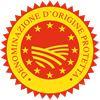Description
The Dinde de Bresse PDO is turkey fowl from animals raised in the specific geographic area. The turkeys distinguish themselves due to their black feathering, rosy skin and flesh, black legs and red caruncles.
Production Area
The production area of Dinde de Bresse PDO is located in the departments of Ain, Saône-et-Loire and in a part of the department of Jura in the regions Rhone-Alps, Burgundy and Franche-Comte.
Production Method
The chickens must be born before the 1st June and the flocks must include no more than 1,500 turkeys. After the transitory period, called starting, whose duration must not be over 10 weeks, the young turkeys must access to a grassy meadow where they will live for at least 15 weeks. In addition to the meadow resources, the fodder must include not only cereals from the production area, but also maize, buckwheat, corn, oat and hybrid of corn and rye, as well as milk and its by-products. The density of turkeys in the final phase of fatting must be of maximum 5 per sq. m. To be butchered, the animals must weight minimum 3.5 kg for females and 6 kg for males. Slaughtering is handmade and the dry or water-soak plucking takes place at a temperature of less than 52°C. Later the carcasses are frayed and/or eviscerated by hand. The minimum weight amounts to 3 kg for females and 5.5 kg for males.
Appearance and Flavour
Dinde de Bresse PDO is fleshy with developed fraenum: the skin must be neat, free from lacerations, bruises or anomalous colours. The natural shape of the keel must not be changed. The feather neck conserved on the upper third of neck and legs must be clean and free from stains. The fowl colour is rosy-white and very compact.
History
The origins of Dinde de Bresse PDO are strictly linked to the characteristics of the geographic, production area. The Bresse area develops over an ancient lake of the tertiary era consisting of a siliceous-clayey ground, which is highly impermeable. This humid ground, covered with meadows rich of worms and other small animals, is the ideal to raise turkeys, as able to give to these animals an important component of their diet.
Gastronomy
The Dinde de Bresse PDO can be conserved in the refrigerator for a few days in the coldest compartment. The turkey meat is perfect for a lot of dishes which vary also depending on the cut chosen. Present in daily diet as a fresh product, the Dinde de Bresse PDO is largely used for delicatessen like ham and sausages. It can be added to salads, sandwiches and savoury cakes. The famous cordon bleu is also much appreciated:a recipe made with turkey escalope stuffed with cheese and bread covered which can be also tasted in different variants due to the type of cheese and the spices used.
Marketing
The product is sold as Dinde de Bresse PDO. It is marketed fresh, whole without head, or in slices packed in trays with protected atmosphere which guarantees a longer conservation and keep unaltered its organoleptic features and its flavour.
Distinctive Features
The Bresse ground, which was analysed in 1924 by the agronomy-engineer Louis Duc, is characterised by a low content of limestone. This feature helps the formation of a slim skeleton which favours the development of fabrics of Dinde de Bresse PDO, giving it its consistency and fleshy characteristic.






